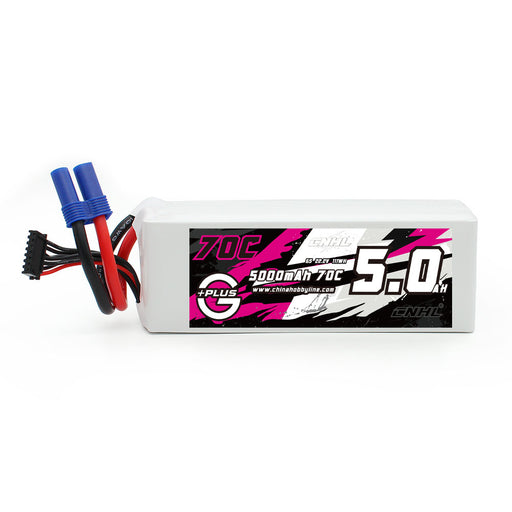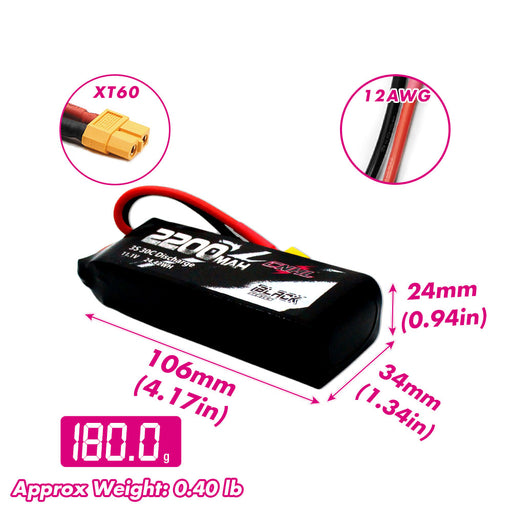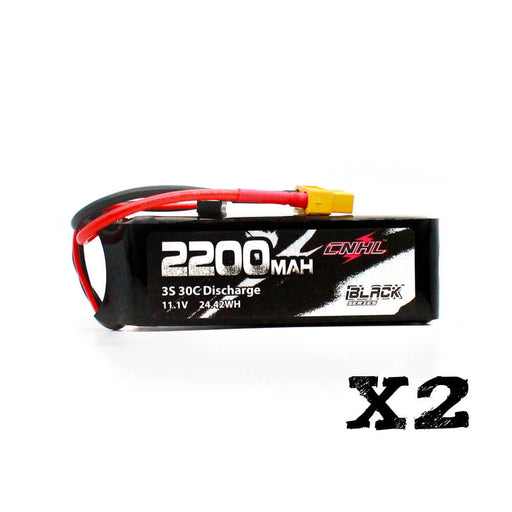
4초 리포 배터리 폭발을 방지하기 위한 조치는 무엇인가요?
1. 4s 리포 배터리 재료의 열안정성 향상
양극재는 합성 조건 최적화, 합성 방법 개선, 열안정성이 우수한 재료 합성 또는 복합 기술(예: 도핑 기술)과 표면 코팅 기술(예: 코팅 기술)을 사용하여 양극재의 열안정성을 향상시킬 수 있습니다.
음극재의 열안정성은 음극재의 종류, 재료 입자의 크기 및 음극에 의해 형성된 SEI 필름의 안정성과 관련이 있습니다. 입자를 일정 비율로 음극으로 만들면 입자 간 접촉 면적을 확장하고, 전극 임피던스를 줄이며, 전극 용량을 증가시키고, 활성 금속 리튬 침전 가능성을 줄이는 목적을 달성할 수 있습니다.

SEI 필름 형성의 품질은 4s 리포 배터리의 충방전 성능과 안전성에 직접적인 영향을 미칩니다. 탄소 재료 표면의 약한 산화 또는 환원, 도핑, 표면 개질 및 구형 또는 섬유상 탄소 재료의 사용은 SEI 필름 품질 향상에 도움이 됩니다.
전해질의 안정성은 리튬염과 용매의 종류와 관련이 있습니다. 열 안정성이 좋은 리튬염과 넓은 전위 안정성 창을 가진 용매를 사용하여 4s 리포 배터리의 열 안정성을 향상시킬 수 있습니다. 전해질에 끓는점이 높고 인화점이 높으며 불연성인 용매를 일부 첨가하면 4s 리포 배터리의 안전성을 개선할 수 있습니다.
전도제와 바인더의 종류 및 양도 4s 리포 배터리의 열 안정성에 영향을 미칩니다. 바인더와 리튬은 고온에서 반응하여 많은 열을 발생시키며, 바인더마다 발열량이 다르고 PVDF의 발열량은 거의 0입니다. 불소계 바인더의 2배에 달하는 발열량을 가진 PVDF를 불소가 없는 바인더로 대체하면 4s 리포 배터리의 열 안정성을 향상시킬 수 있습니다.
2. 4s 리포 배터리의 과충전 보호 능력 향상
4s 리포 배터리의 과충전을 방지하기 위해 보통 전용 충전 회로를 사용하여 4s 리포 배터리의 충방전 과정을 제어하거나, 단일 4s 리포 배터리에 안전 밸브를 설치하여 더 높은 수준의 과충전 보호를 제공합니다; 둘째로, 양성 온도 계수 저항기(PTC)를 사용할 수도 있는데, 그 메커니즘은 4s 리포 배터리가 과충전으로 인해 가열될 때 내부 저항이 증가하여 과충전 전류를 제한하는 것입니다; 또한 특수 다이어프램을 사용할 수 있는데, 4s 리포 배터리가 이상 상태일 때 다이어프램의 온도가 너무 높으면 다이어프램의 기공이 수축 및 차단되어 이동을 방지하고 4s 리포 배터리의 과충전을 막습니다.3. 4s 리포 배터리의 단락 방지
다이어프램의 기공률은 약 40%이며 분포가 균일합니다. 10nm 크기의 기공을 가진 다이어프램은 양극과 음극의 작은 입자 이동을 방지하여 4s 리포 배터리의 안전성을 향상시킬 수 있습니다;
분리막의 절연 전압은 양극과 음극 간의 접촉과 직접 관련이 있습니다. 분리막의 절연 전압은 분리막의 재료와 구조, 그리고 4s 리포 배터리의 조립 조건에 따라 달라집니다.
PP/PE/PP와 같은 복합 분리막을 사용하여 열적 폐쇄 온도와 융점 사이의 큰 차이를 두면 4s 리포 배터리의 열 폭주를 방지할 수 있습니다.

분리막 표면에 세라믹 층을 코팅하여 분리막의 내열성을 향상시킵니다. 낮은 융점 PE(125℃)를 사용해 낮은 온도에서 기공을 닫고, PP(155℃)는 분리막의 형태와 기계적 강도를 유지하여 양극과 음극의 접촉을 방지하고 4s 리포 배터리의 안전을 보장합니다.
흔히 알려진 바와 같이 흑연 음극은 금속 리튬 음극을 대체하여 충방전 과정에서 음극 표면의 리튬 침전 및 용해가 탄소 입자 내 리튬 삽입 및 추출로 바뀌어 리튬 덴드라이트 형성을 방지합니다.
하지만 이것이 4s 리포 배터리의 안전 문제가 해결되었다는 의미는 아닙니다. 4s 리포 배터리 충전 과정에서 양극 용량이 너무 크면 금속 리튬이 음극 표면에 침전되고, 음극 용량이 너무 많으면 4s 리포 배터리 용량 손실이 심각해집니다.
코팅 두께와 균일성도 활성 물질 내 삽입 및 탈삽입에 영향을 미칩니다. 예를 들어, 음극 표면 밀도가 두껍고 불균일하면 충전 과정에서 모든 곳의 분극 크기가 달라 금속 리튬이 음극 표면에 국부적으로 침전될 수 있습니다.
또한, 부적절한 사용 조건도 4s 리포 배터리의 단락을 초래할 수 있습니다. 저온 조건에서는 침전 속도가 삽입 속도보다 커서 전극 표면에 금속 리튬이 침전되어 단락을 일으킵니다. 따라서 양극과 음극 재료의 비율을 조절하고 코팅의 균일성을 향상시키는 것이 리튬 덴드라이트 형성을 방지하는 핵심입니다.

또한, 바인더의 결정화와 구리 덴드라이트 형성도 4s 리포 배터리 내부 단락을 일으킬 수 있습니다. 코팅 과정에서 슬러리 내 모든 용매는 코팅, 베이킹 및 가열로 제거됩니다. 가열 온도가 너무 높으면 바인더가 결정화되어 활성 물질이 벗겨지고 4s 리포 배터리 내부 단락을 유발할 수 있습니다.
과방전 상태에서 4s 리포 배터리가 1-2V까지 과방전되면 음극 전류 집전체인 구리 박이 용해되어 양극에 침전되기 시작합니다. 이는 리포 배터리 내부 단락을 초래합니다.
위 내용은 오늘 CNHL 리튬 4s 리포 배터리 제조업체가 전해드리는 모든 내용입니다. 위 내용이 4s 리포 배터리 폭발 방지 대책을 더 잘 이해하는 데 도움이 되어 4s 리포 배터리를 안전하게 사용할 수 있기를 바랍니다.
리튬 배터리에 대한 자세한 정보는 아래에서 확인할 수 있습니다:
6s 리포 배터리 양극 재료에 대한 자세한 설명
리포 배터리 3s 관리 시스템과 그 필요성

베스트 셀러즈
-
원래 가격 $65.99원래 가격 $65.99 - 원래 가격 $65.99원래 가격 $65.99$53.99 USD - $65.99 USD$53.99 - $65.99현재 가격 $53.99 USD
CNHL G+Plus 5000mAh 22.2V 6S 리포 배터리 70C EC5 플러그 포함
재고 10+개 이상 있습니다사양: 재고 번호: 500706EC5 용량: 5000mAh 전압: 22.2V / 6-셀 / 6S1P 방전율: 70C 연속 / 140C 순간 충전율: 최대 5C 크기(1-5mm 차이): 49X51X149mm(높이*너비*길이) 대략 무게(±5g) : 714g 출...
전체 세부 정보 보기원래 가격 $65.99원래 가격 $65.99 - 원래 가격 $65.99원래 가격 $65.99$53.99 USD - $65.99 USD$53.99 - $65.99현재 가격 $53.99 USD최대 18% 절약하세요 -
원래 가격 $38.99원래 가격 $38.99 - 원래 가격 $38.99원래 가격 $38.99$34.99 USD - $38.99 USD$34.99 - $38.99현재 가격 $34.99 USD
CNHL 스피디 피자 시리즈 프로 1350mAh 22.2V 6S 150C 리포 배터리 XT60 플러그 포함
단 10 개만 남았습니다사양: 재고 번호: 1351506PZ 용량: 1350mAh 전압: 22.2V / 6셀 / 6S1P 방전 속도: 연속 150C / 순간 300C 충전 속도: 최대 5C 크기(1-5mm 차이): 38X38X78mm 대략 무게(±5g) : 215g 출력 커넥터: X...
전체 세부 정보 보기원래 가격 $38.99원래 가격 $38.99 - 원래 가격 $38.99원래 가격 $38.99$34.99 USD - $38.99 USD$34.99 - $38.99현재 가격 $34.99 USD최대 10% 절약하세요 -
원래 가격 $51.98원래 가격 $51.98 - 원래 가격 $51.98원래 가격 $51.98$46.78 USD - $51.98 USD$46.78 - $51.98현재 가격 $46.78 USD
2팩 CNHL 블랙 시리즈 V2.0 1300mAh 22.2V 6S 130C 리포 배터리 XT60 플러그 포함
재고 10+개 이상 있습니다사양 재고 번호: 1301306BK 용량: 1300mAh 전압: 22.2V / 6-셀 / 6S1P 방전율: 130C 연속 / 260C 순간 충전율: 최대 5C 크기(1-5mm 차이): 48X33X77mm 대략 무게(±5g) : 210g 출력 커넥터: XT60 밸...
전체 세부 정보 보기원래 가격 $51.98원래 가격 $51.98 - 원래 가격 $51.98원래 가격 $51.98$46.78 USD - $51.98 USD$46.78 - $51.98현재 가격 $46.78 USD최대 10% 절약하세요 -
원래 가격 $43.98원래 가격 $43.98 - 원래 가격 $43.98원래 가격 $43.98$31.98 USD - $43.98 USD$31.98 - $43.98현재 가격 $31.98 USD
[Combo] 2팩 CNHL MiniStar 1500mAh 14.8V 4S Lipo 배터리 120C XT60 플러그 포함
재고 10+개 이상 있습니다사양: 재고 번호: 1501204 용량: 1500mAh 전압: 14.8V / 4셀 / 4S1P 방전 속도: 연속 120C / 순간 240C 충전 속도: 최대 5C 크기(1-5mm 차이): 37X33X76mm 대략 무게(±5g) : 169g 출력 커넥터: XT60...
전체 세부 정보 보기원래 가격 $43.98원래 가격 $43.98 - 원래 가격 $43.98원래 가격 $43.98$31.98 USD - $43.98 USD$31.98 - $43.98현재 가격 $31.98 USD최대 27% 절약하세요 -
원래 가격 $23.98 - 원래 가격 $37.98원래 가격 $23.98 - 원래 가격 $37.98원래 가격 $23.98$19.98 USD - $37.98 USD$19.98 - $37.98현재 가격 $19.98 USD
2팩 CNHL 블랙 시리즈 2200mAh 3S 11.1V 30C 리포 배터리 XT60 플러그 포함
재고 10+개 이상 있습니다사양: 재고 번호: 220303BK 용량: 2200mAh 전압: 11.1V / 3셀 / 3S1P 방전율: 30C 연속 / 60C 버스트 충전 속도: 최대 5C 크기(1-5mm 차이): 24X34X106mm 대략 무게(±5g) : 180g 출력 커넥터: XT60 ...
전체 세부 정보 보기원래 가격 $23.98 - 원래 가격 $37.98원래 가격 $23.98 - 원래 가격 $37.98원래 가격 $23.98$19.98 USD - $37.98 USD$19.98 - $37.98현재 가격 $19.98 USD최대 17% 절약하세요
새 항목
-
원래 가격 $120.00 - 원래 가격 $120.00원래 가격 $120.00$120.00 USD$120.00 - $120.00현재 가격 $120.00 USD
MNRC MN300 RTR 1/12 스케일 4WD RC 록 크롤러 오프로드 트럭 투스피드 변속기 포함
단 9 개만 남았습니다MNRC MN300은 1/12 스케일의 레디 투 런(RTR) 4WD RC 록 크롤러로, 가벼운 크롤링, 트레일 주행, 일상적인 오프로드 재미를 위해 만들어졌습니다. 전자장치가 설치된 상태로 조립되어 있으며, 7.4V 배터리와 USB 충전 케이블이 박스에 포함되...
전체 세부 정보 보기원래 가격 $120.00 - 원래 가격 $120.00원래 가격 $120.00$120.00 USD$120.00 - $120.00현재 가격 $120.00 USD -
원래 가격 $119.99 - 원래 가격 $119.99원래 가격 $119.99$119.99 USD$119.99 - $119.99현재 가격 $119.99 USD
VOLANTEX 스핏파이어 RC 비행기 4채널 6축 자이로 안정화 탑재 즉시 비행 가능
단 9 개만 남았습니다제2차 세계대전의 전설적인 영국 전투기에서 영감을 받은 VOLANTEX 스핏파이어 RC 비행기는 고전적인 전투기 외관과 현대적인 초보자 친화적 비행 제어를 결합했습니다. VOLANTEX의 검증된 400mm 플랫폼을 기반으로 제작된 이 즉시 비행 가능한 RC...
전체 세부 정보 보기원래 가격 $119.99 - 원래 가격 $119.99원래 가격 $119.99$119.99 USD$119.99 - $119.99현재 가격 $119.99 USD -
원래 가격 $122.99 - 원래 가격 $122.99원래 가격 $122.99$122.99 USD$122.99 - $122.99현재 가격 $122.99 USD
VOLANTEX BF109 RC 비행기 4채널 RTF – 자이로 및 XPilot 탑재 제2차 세계대전 전투기
단 9 개만 남았습니다VOLANTEX BF109 4채널 RC 비행기 RTF는 가장 상징적인 제2차 세계대전 전투기 중 하나를 컴팩트하고 초보자 친화적인 패키지로 선보입니다. 400mm 날개폭, 가벼운 EPP 폼 기체, 그리고 XPilot 자이로 시스템을 갖춘 이 전투기는 새로운 ...
전체 세부 정보 보기원래 가격 $122.99 - 원래 가격 $122.99원래 가격 $122.99$122.99 USD$122.99 - $122.99현재 가격 $122.99 USD -
원래 가격 $117.99 - 원래 가격 $117.99원래 가격 $117.99$117.99 USD$117.99 - $117.99현재 가격 $117.99 USD
Volantex RC 비행기 P51D V2 400mm RTF – 초보자를 위한 XPilot 안정장치가 탑재된 4채널 워버드
단 9 개만 남았습니다Volantex RC 비행기 P51D V2 RTF는 학습을 최대한 편안하게 할 수 있도록 설계된 컴팩트한 WWII 스타일 전투기입니다. 400mm 날개 길이, EPP 폼 구조, XPilot 6축 안정화 장치를 갖춘 이 Volantex RC 비행기는 초보자에게 ...
전체 세부 정보 보기원래 가격 $117.99 - 원래 가격 $117.99원래 가격 $117.99$117.99 USD$117.99 - $117.99현재 가격 $117.99 USD -
원래 가격 $148.87 - 원래 가격 $148.87원래 가격 $148.87$148.87 USD$148.87 - $148.87현재 가격 $148.87 USD
MF-A84 690mm P-47 스타일 브러시리스 RC 비행기 (RTF, 카메라 없음)
단 9 개만 남았습니다MF-A84 690mm 브러시리스 RC 비행기는 P-47 썬더볼트와 Ki-84 같은 클래식 전투기에서 영감을 받은 전투기 스타일 모델입니다. 강력한 브러시리스 모터, 3단계 자이로 시스템, EPP 내구성, 최대 25분 비행 시간으로 초보자와 숙련된 조종사 모...
전체 세부 정보 보기원래 가격 $148.87 - 원래 가격 $148.87원래 가격 $148.87$148.87 USD$148.87 - $148.87현재 가격 $148.87 USD





















댓글 남기기